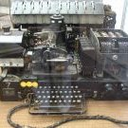Camp 2007 - 1.01
Chaos Communication Camp 2007
To infinity and beyond
| Referenten | |
|---|---|

|
Sven Moritz Hallberg |
| Programm | |
|---|---|
| Tag | 4 |
| Raum | Shelter Bar |
| Beginn | 15:30 |
| Dauer | 01:00 |
| Info | |
| ID | 2073 |
| Veranstaltungstyp | Vortrag |
| Track | Science |
| Sprache | englisch |
| Feedback | |
|---|---|
|
Haben Sie diese Veranstaltung besucht? Feedback abgeben |
Swedish analysis of Nazi crypto TTYs
How Beurling et al. broke the Siemens & Halske T52 crypto teleprinter

This talk will describe how a team of Swedish cryptanalysts broke the electromechanical cryptographic teleprinter "Siemens & Halske T52" which was used by the Germans during World War II for "important" traffic. It contained a stream cipher implementation much more sophisticated than the substitution engine of the well-known Enigma. The talk will focus on reconstructing how the Swedes, specifically the key figure of Arne Beurling, could have gotten the ideas for breaking the cipher -- a process about which next to no historical accounts exist.
The machine called Enigma, widely famous for being used by German armies during World War II to secretly (or so they hoped) communicate among troops, was a field device. It was portable, simple to operate, as well as relatively cheap to produce, containing neither electrical motors nor any coding/decoding assembly. It was, however, not the only crypto device employed by the Germans.
The Siemens & Halske T52 (in its several variants), commonly referred to as the Geheim- or G-Schreiber (German for "secretly-writer"), was a teleprinter with integrated encryption/decryption facility. It was cryptographically superior to the Enigma and, by its nature, much more sophisticated in terms of its electro-mechanical engineering. Due to the latter, it was also much bulkier, weighing no less than 100kg, excluding the transport case. Therefore it was used as a stationary unit, primarily by the German air force, navy, and for diplomatic purposes. In total, about 600 units were in operation.
From April 1940, Swedish authorities gained access to large quantities of T52-encrypted telegraph traffic. With Norway just invaded and significant parts of Finland already surrendered to Russia, the Swedes were obviously interested in the plaintexts and, having been quite successful at breaking Russian and French crypto already, promptly tried their luck in deciphering the German messages.
The initial successfull cryptanalysis was done in only a matter of weeks by a scientist named Arne Beurling with next to no knowledge but the mere basics of teleprinter technology and a bunch of ciphertext intercepts. Unfortunately he refused to talk about the details of how he actually broke the cipher. This talk will try to reconstruct a possible sequence of ideas that could have led to the eventual breaking of the code. Thus it tries to shed some light on the "magical" work of a cryptanalyst.
